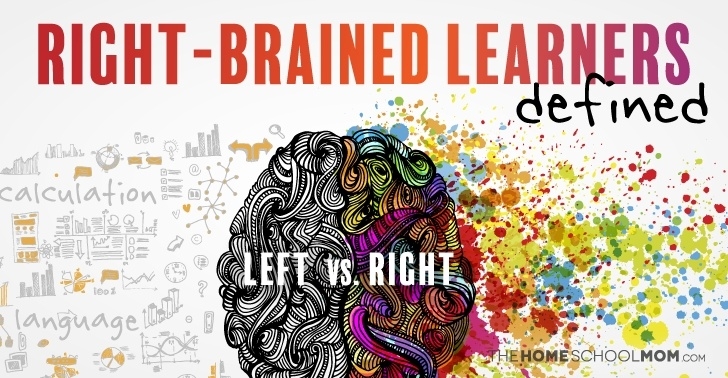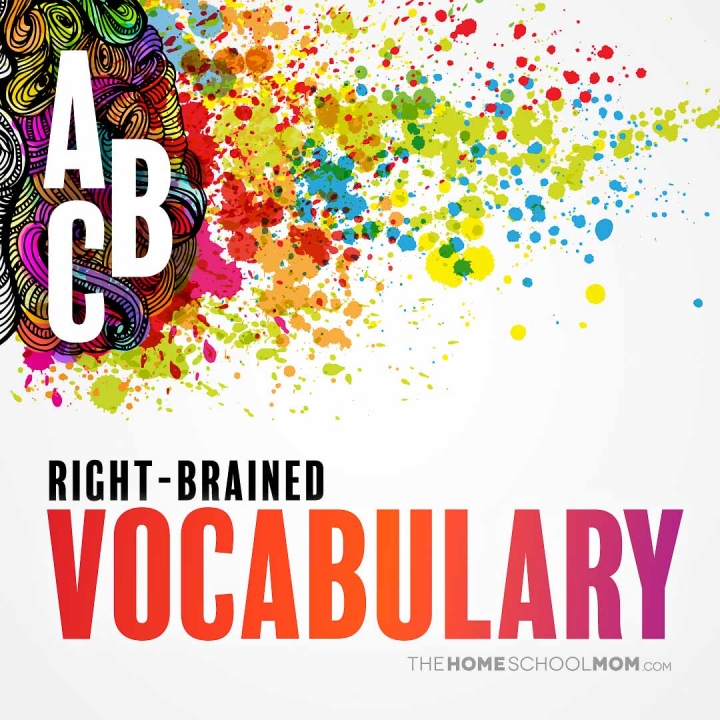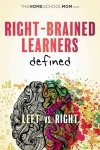Does your child skip around when doing math problems? Have trouble reviewing work or checking over details? Find spelling challenging? Require a tremendous amount of interaction during homeschooling?
If the answer to many of these questions is "yes," you may have a right-brain-oriented child! Right-brain learner characteristics differ from those of left-brain learners.
Ned Herrmann, a pioneer in research on creative thinking and whole brain preferences for processing information, developed what is known as the brain dominance theory. This theory draws on the split-brain research by Nobel Prize winner Dr. Roger Sperry, whose work in the 1950s demonstrated that the left and right hemispheres of the brain are responsible for different higher functions.
Herrmann's brain dominance theory posits that people have genetically-rooted preferences for how they think, learn, and process information, based on which part of their brain is dominant[1].
Although no one is completely "right-brained" or "left-brained", this research has strong implications for those trying to teach children. The left hemisphere of the brain is in charge of verbal, logical, and analytical processes, whereas the right hemisphere processes information visually, holistically, and intuitively. Consider some of the right-brain learner characteristics vs. left-brain characteristics:
Left-Brain vs. Right-Brain Learner Characteristics
- Analytical vs. Intuitive
- Logical vs. Emotional
- Verbal vs. Visual
- Details vs. The big picture
- Organized vs. Random
- Orderly and predictable vs. Spontaneous and flexible
- Plan ahead vs. Impulsive
- Few gestures when speaking vs. Many gestures
- Logical vs. Creative
- Sequential vs. Skipping around
- Specifics vs. Main idea
- Work independently vs. Cooperation in groups
- Observation vs. Touching and feeling
- Names vs. Faces
- Literal vs. Contextual
- Words vs. Pictures
- Symbolic vs. Concrete
Right-brain-oriented children often get left behind in traditional classroom situations, which are geared toward the left-brained learner. Worksheets, textbooks, and fact-based, detail-driven learning settings, which focus on independent work completion, naturally cater to the left-brain-oriented child.
Neurophysiologist Dr. Carla Hannaford found that among gifted students, only 22% were right-brained. However, her research demonstrated that 22% of children in special education were right-brained learners[2]. As global, interactive, creative children are constrained to fit into logical, word- and independent-work-oriented classroom situations, they can easily be labeled "struggling learners" when they are not able to succeed to their potential.
Fortunately, this is where home education can shine! Homeschooling allows parents to individualize the curriculum and teaching methods to the specific needs of each child. Parents of children with right-brain learner characteristics can provide a spontaneous, creative, discovery-based learning environment, which is focused on presenting information in a visual rather than auditory (lecture) manner.
No classroom means plenty of interaction for the right-brained child, and teaching materials can be specifically chosen with right-brain tendencies in mind (no repetitive worksheets, please!). Rather than being seen as learning disabled, attention-deficit, unfocused, or special needs, right-brain-oriented learners can flourish in a homeschool environment, which maximizes their strengths and potential.
Strategies for Teaching Right-Brained Learners
[1] http://www.singsurf.org/brain/rightbrain.php
[2] http://child-1st.typepad.com/my_weblog/2011/01/the-strengths-of-the-right-brained-learner.html













 Rebecca Capuano holds a Master of Social Work degree from East Carolina University and is the stay-at-home mom of three children (one of whom is in heaven). She also makes attempts at being a homeschooler, writer, photographer, scrapbooker, and truth-seeker. She has worked in a variety of capacities (including group homes, day treatment centers, and public schools) with at-risk children and staff, including developing a therapeutic and educational day treatment center for delinquent youth in Wilmington, North Carolina. She currently resides in Virginia. Rebecca believes that family is created by God as the most fundamental institution in society, and she is dedicated to helping families nurture their children to become responsible persons of character and integrity.
Rebecca Capuano holds a Master of Social Work degree from East Carolina University and is the stay-at-home mom of three children (one of whom is in heaven). She also makes attempts at being a homeschooler, writer, photographer, scrapbooker, and truth-seeker. She has worked in a variety of capacities (including group homes, day treatment centers, and public schools) with at-risk children and staff, including developing a therapeutic and educational day treatment center for delinquent youth in Wilmington, North Carolina. She currently resides in Virginia. Rebecca believes that family is created by God as the most fundamental institution in society, and she is dedicated to helping families nurture their children to become responsible persons of character and integrity.
All 3 of my children are this way. So far it looks like my two boys are dyslexic and I find myself everyday saying, "I'm so glad we are homeschooling".